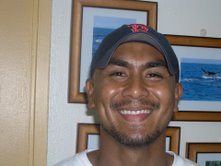Assessment Methods


 Student’s completed projects are presented around the room. A few of the projects has a rubric appropriate for kindergarten work such as the landform project. The student points out the elements required and include in their landform made of clay dough hills, mountains, river, and lake with assigned colors. This helps me understand if the students understand the lesson or they need more review.
Student’s completed projects are presented around the room. A few of the projects has a rubric appropriate for kindergarten work such as the landform project. The student points out the elements required and include in their landform made of clay dough hills, mountains, river, and lake with assigned colors. This helps me understand if the students understand the lesson or they need more review.
 During Direct Instruction (DI) or any activity, I could use question and answer to assess student understanding of the lesson. I could use the results to continue to the next lesson or review previous lessons again to meet student needs.
During Direct Instruction (DI) or any activity, I could use question and answer to assess student understanding of the lesson. I could use the results to continue to the next lesson or review previous lessons again to meet student needs.

Observing them individually doing work alone or with others in centers or small/whole group activities could assess students. I can step back and watch the students follow 1-2 step directions for their activities. I can jot down what kind of words students use to communicate with each other during work. I can also observe who are the leaders/advance in the class and those who needs extra assistance. I could also observe the antecedent for good and bad behaviors and have proper consequence for each situation.

 While students work in an activity, such as a math activity, I watch for student participation to see who understand and who are having difficulties with the lesson. I can use what I see to not only assess student learning, but also the lessons provided by me the teacher. I can use that to know what works and what doesn’t to adjust and modify future lessons for the students.
While students work in an activity, such as a math activity, I watch for student participation to see who understand and who are having difficulties with the lesson. I can use what I see to not only assess student learning, but also the lessons provided by me the teacher. I can use that to know what works and what doesn’t to adjust and modify future lessons for the students.

During the Fieldtrip at the Saipan Zoo, I assessed the student knowledge about animals with questions and answers. They also have a clipboard with a animal checklist of the animals they saw and the animals they didn't. Before the trip, I would ask the students what they think they would see at the zoo, then I will review with class again after the trip with a group discussion and individual work. The individual work consisted of what they like most from the trip. They had to draw a picture of an animal or more that they liked the most and write at least one sentence describing their drawing. These activity will also show me their present level in writing skills.



















